Results 1 to 10 of 31
Hybrid View
-
05-06-2013, 03:55 AM #1Member

- Join Date
- Oct 2012
- Location
- Sydney Australia
- Posts
- 74
Thanked: 8
I can see them.
Some great info thank you.
-
05-06-2013, 04:06 AM #2Senior Member




- Join Date
- Nov 2012
- Location
- Across the street from Mickey Mouse in Calif.
- Posts
- 5,320
Thanked: 1184
I see them also. This is a great thread. Thanks ! I haven't been tempted by any with tortoise yet, but good to know when I do find one I might want.
Good judgment comes from experience, and experience....well that comes from poor judgment.
-
05-06-2013, 02:47 PM #3

Great info.....except now I need a Turtle Shell Scaled Razor....ughhhh.....
“Two things are infinite: the universe and human stupidity; and I'm not sure about the universe.”
Albert Einstein
-
05-06-2013, 07:30 PM #4

Two more useful bits: dermestid beetle damage and ultraviolet illumination.
First up, the larvae that do the damage look more or less like this:

There are many different species of dermestid beetle. While they're variable, most are very small. You'll want to be careful with google searches about them, as they get heavy use in forensics for stripping skeletons of all flesh -- and that includes humans. There are lots of pictures of that.
The beetles and their larva are after the keratin that makes up tortoiseshell (and horn, which I'll get to in a moment).
More importantly, this is what they do to tortoise shell:
(all of my images can be right-clicked and 'viewed' in larger size)


Under even minor magnification you can see that the 'bites' are actually many, many nibbles with a characteristic pebbled look. Every one of those tiny, tiny divots is about the shape of the mandibles of the beetles and their larva.
While it's very annoying for a lovely set of tortoise shell scales to have beetle damage, on newer razors it's actually an excellent diagnostic. By 1900 or so, surprisingly good copies of tortoise shell were made in celluloid, and then not much later Lucite. Celluloid faux tortoise has its own set of problems. The transparent amber portions of the plastic are extremely prone to breakdown and so -- like the Craftsman razor in the posts above -- you'll get mottled corrosion on the steel that corresponds to the lighter parts of the celluloid. Lucite is much more stable and can be quite attractive.
Celluloid and Lucite take damage very, very differently from genuine tortoise shell. They shatter and chip in a much more crystalline pattern. Stress fractures on the edge can look like delamination (which, unfortunately, I don't have any pictures of), but those fractures are always conchoidal.

That chip is from warped scales being dinged (repeatedly) by the blade, but you can see that the Lucite mockshell damage is very different from the real deal.
The beetles also eat horn (it's made of the same stuff as tortoise shell), and their bite marks look the same on that stuff. But you can see in the pictures in ScienceGuy's post of dyed horn that those bites can reveal that the coloration is only on the surface.
A good UV flashlight can be also useful. Celluloid and Lucite, under UV illumination, look far less homogenous than tortoise shell. The darker patches look separate.

From top to bottom are: Lucite, dyed horn (mockshell) and genuine tortoise.
In dimmer lighting, the Lucite (ironically, considering its name) looks much darker than either the mockshell or the tortoise (which of course doesn't actually come from a tortoise at all).
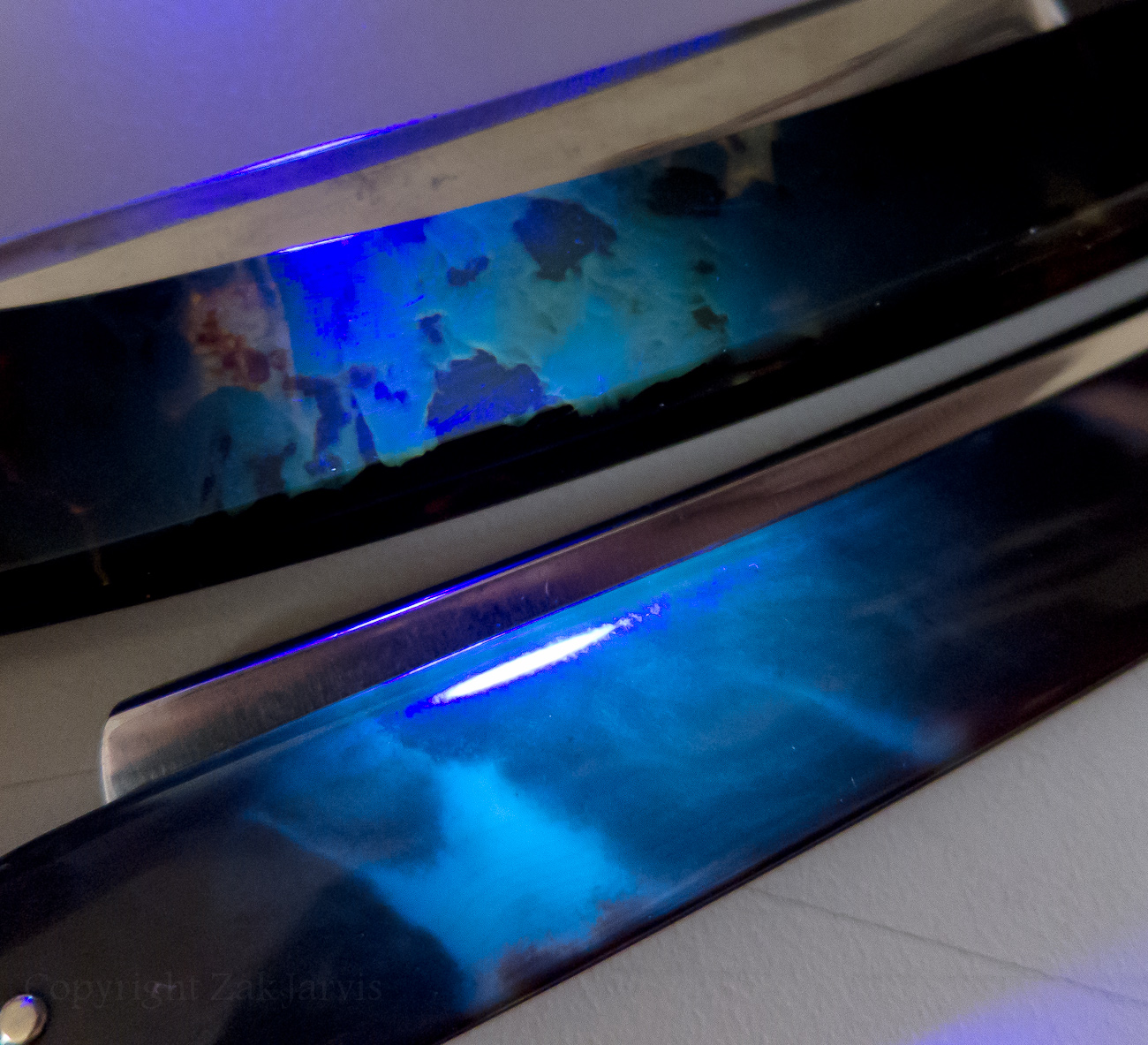
Under UV illumination, the Lucite is obvious compared to the tortoise.
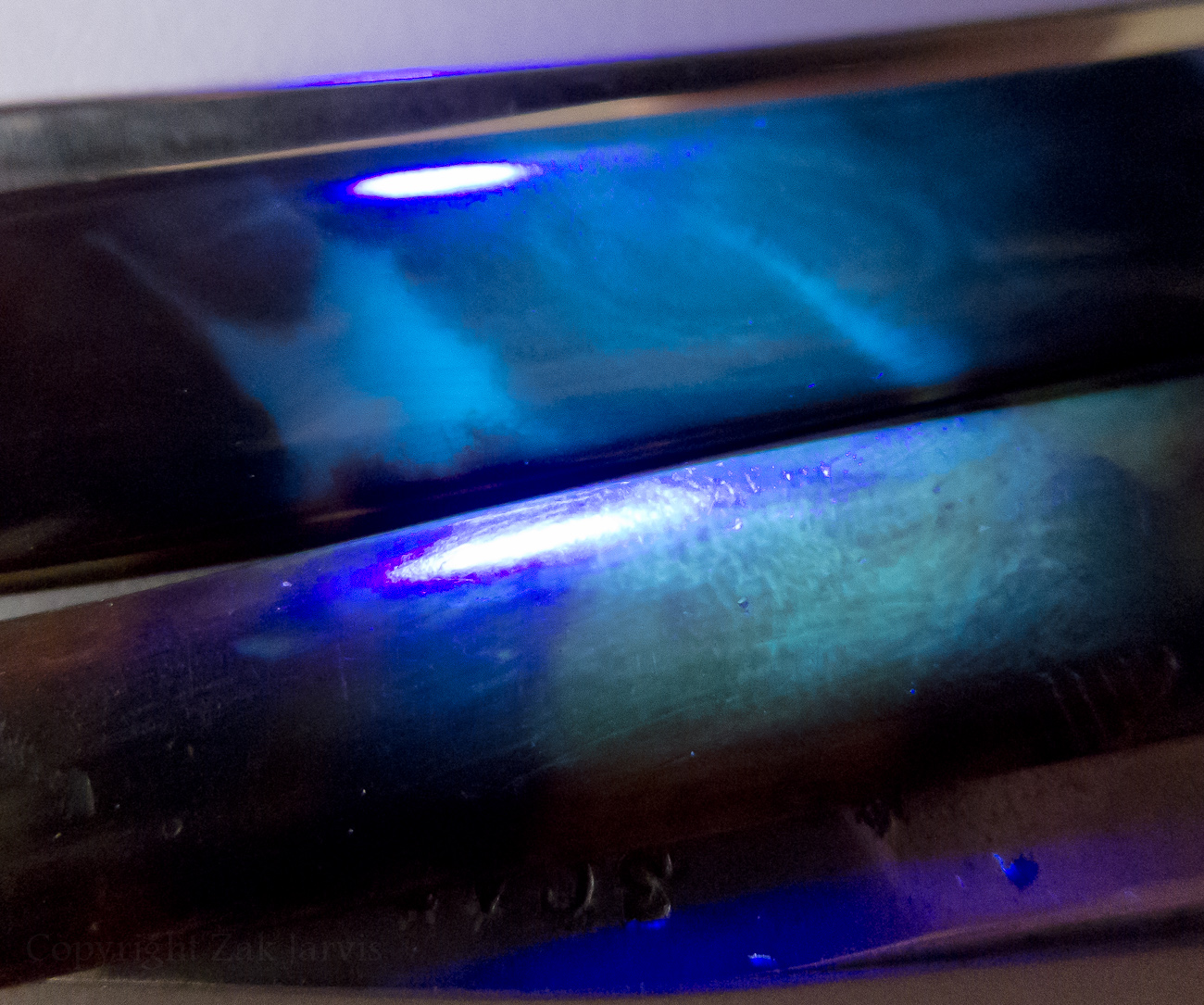
The difference between tortoise (on top) and mockshell (on the bottom) is more subtle under UV, but still visible.-Zak Jarvis. Writer. Artist. Bon vivant.
-
The Following 13 Users Say Thank You to Voidmonster For This Useful Post:
Cangooner (05-13-2013), Chevhead (09-12-2015), engine46 (09-14-2015), Fikira (09-11-2015), Frankenstein (04-06-2014), Geezer (09-12-2015), gooser (01-19-2015), JimmyHAD (05-06-2013), jmercer (09-12-2015), MikeT (07-03-2016), pixelfixed (05-06-2013), ScienceGuy (05-06-2013), Wullie (05-09-2013)
-
05-06-2013, 07:57 PM #5

Here is my gen torty complete with bug bites. Thanks Zak for confirming that is what they are. I wasn't 100% positive until you posted the photos above, since they don't look like the typical horn bug bites. Case Bros Springville, NY ;
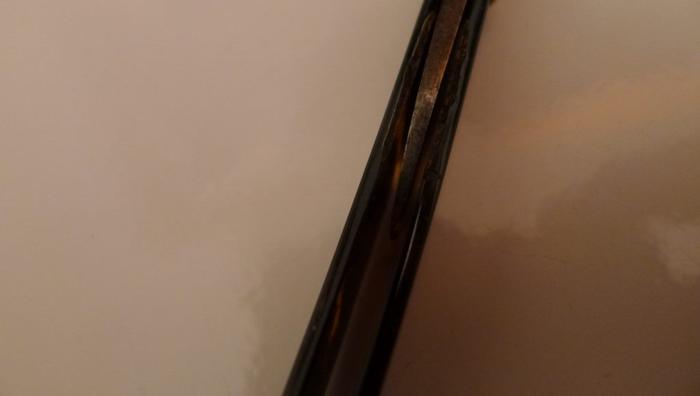
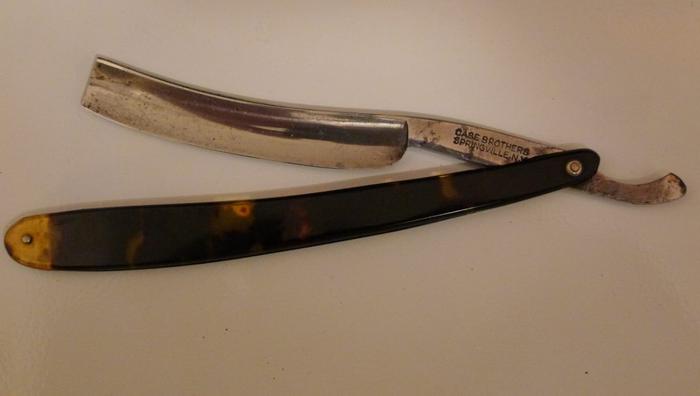
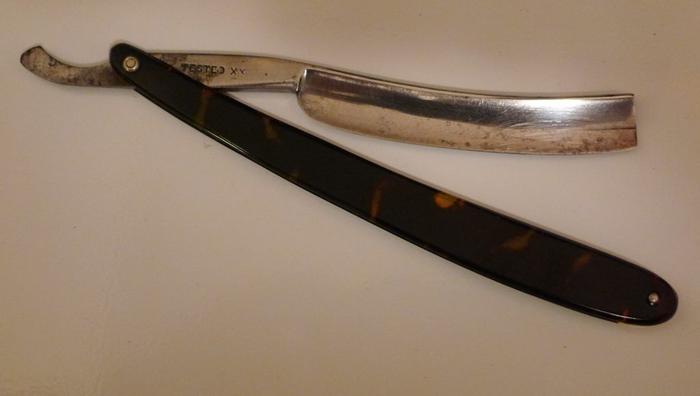
-
05-06-2013, 08:05 PM #6
-
05-06-2013, 08:11 PM #7
-
05-06-2013, 08:45 PM #8
-
The Following 3 Users Say Thank You to JimmyHAD For This Useful Post:
engine46 (09-14-2015), ScienceGuy (05-06-2013), Voidmonster (05-06-2013)
-
07-03-2019, 10:07 PM #9

A 6 year old post.
I don't think he is active here anymore.No matter how many men you kill you can't kill your successor-Emperor Nero


 93Likes
93Likes LinkBack URL
LinkBack URL About LinkBacks
About LinkBacks






 Reply With Quote
Reply With Quote



